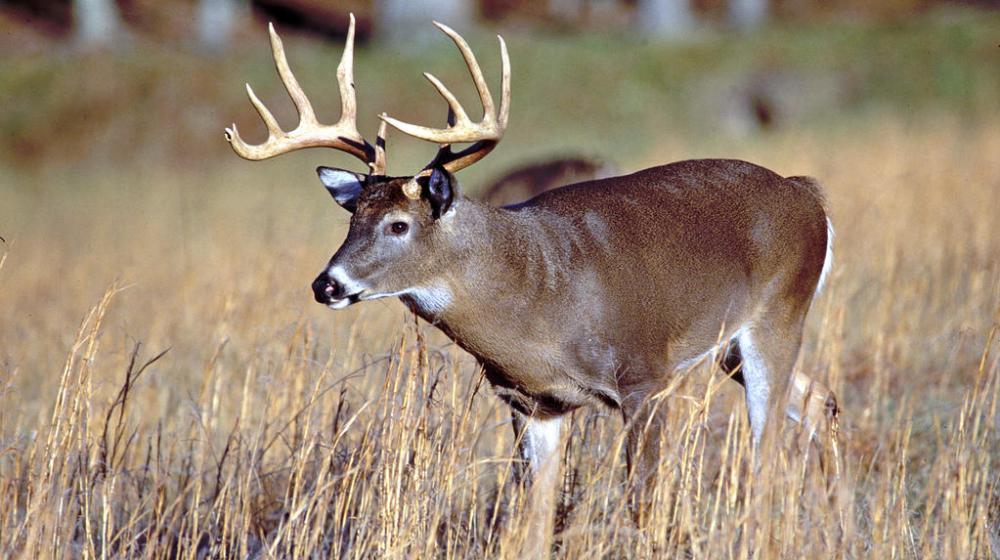
https://www.aphis.usda.gov/animal_health/one_health/downloads/qa-covid-white-tailed-deer-study.pdf
The U.S. Department of Agriculture’s (USDA) Animal and
Plant Health Inspection Service (APHIS) recently
completed a study that analyzed serum samples from
free-ranging white-tailed deer for SARS-CoV-2 antibodies.
Results of the study indicate that certain white-tailed
deer populations in Illinois, Michigan, New York, and
Pennsylvania were exposed to SARS-CoV-2.
Why did APHIS decide to do this study?
APHIS supports a One Health approach to address
animal diseases, including SARS-CoV-2. White-tailed deer
are susceptible to SARS-CoV-2, are abundant in the United
States (approximately 30 million*), and often come into
close contact with people. Given these factors, we felt it
prudent to further investigate SARS-Cov-2 in wild deer.
Studying the susceptibility of certain mammals, such as
deer, to the SARS-CoV-2 virus helps to identify species
that may serve as reservoirs or hosts for the virus. It also
helps us understand the origin of the virus and predict its
impacts on wildlife and the risks of cross-species transmission.
What were the results?
APHIS collected a total of 481 samples between January
2020 and March 2021 from Illinois, Michigan, New York,
and Pennsylvania. We detected SARS-CoV-2 antibodies in
33 percent of those samples. The results varied by State
(Illinois = 7 percent of 101 samples contained antibodies;
Michigan = 67 percent of 113 samples; New York = 19
percent of 68 samples; and Pennsylvania = 31 percent of
199 samples). Although the results indicate that certain
white-tailed deer populations in these States were
exposed to SARS-CoV-2, they should not be extrapolated
to represent the prevalence of SARS-CoV-2 antibodies in
the deer populations as a whole.
We detected SARS-CoV-2 antibodies in only 1 of the 143
samples collected before January 2020 (pre-COVID-19
pandemic in people). The single sample was at the
minimum threshold of detection and was likely a false
positive. This low-level detection is well within the
expected false positive rate of the test used.
Did the deer get the virus from people, the
environment, or other deer?
We do not know how the deer were exposed to SARSCoV-2. It’s possible they were exposed through people,
the environment, other deer, or another animal species.
Could the deer spread the virus to people?
There is no evidence that animals, including deer, are
playing a significant role in the spread of SARS-CoV-2 to
people. Based on the available information, the risk of
animals spreading COVID-19 to people is low.
Do deer show clinical signs of illness?
This was not the focus of our study. However, there were
no reports of clinical illness associated with SARS-CoV-2 in
the deer populations we surveyed, and clinical signs of
SARS-CoV-2 have not been observed in wild white-tailed
deer. In addition, captive deer experimentally infected
with SARS-CoV-2 as part of a USDA Agricultural Research
Service study did not show clinical signs of illness.
Could the test be detecting antibodies to another
virus (i.e., might the test be cross-reacting)?
Scientists at APHIS’ National Wildlife Research Center
used a commercially available SARS-CoV-2 antibody
screening test known to be highly specific (accurate) for
use in other species. However, it has not been validated
on deer. To help reduce concerns that the commercial
test may have detected antibodies to another virus (also
known as cross-reacting), we also tested a subset of
samples at APHIS’ National Veterinary Services
Laboratories in Ames, IA, using a different test specific to
SARS-CoV-2. Both analyses resulted in identical findings.